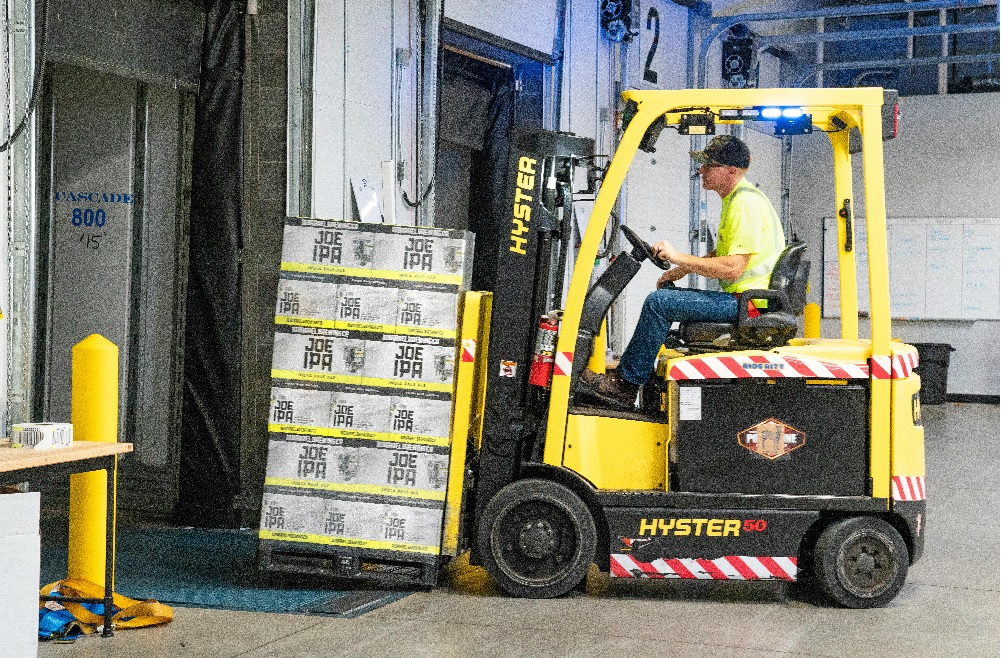The foundation of supply chains is warehouse operations, so increasing their efficiency immediately affects customer satisfaction, cost control, and production. Simplifying these processes calls for knowledge of contemporary technology, good staff management, and smart use of space and tools. Businesses in the competitive market of today have to be always changing to improve workflow efficiency, lower manual labor, and guarantee that procedures operate as best they can. In the absence of optimization, warehouses could cause supply chain bottlenecks that cause delays, inventory problems, and higher running expenses. Using creative ideas is crucial for companies to keep ahead as it will help to increase profitability, safety, and efficiency.
Enhancing Workflow Through Strategic Layout Design
The general effectiveness of operations depends much on the physical configuration of a warehouse. A well-considered arrangement guarantees that staff members may swiftly and easily reach products, lower needless motions, and decrease travel time. Start by setting the space so that frequently used products are close to the packing and shipping sections, therefore minimizing retrieval times. Faster fulfillment rates result from much less unneeded walking and handling using this method.
Optimizing vertical storage increases effectiveness as well. Stackable shelves or pallet racking solutions help to maximize vertical space, therefore guaranteeing easy access to goods.
Implementing Automation and Robotics for Consistent Performance
By lowering dependability on physical labor for repetitive activities, automation technology is revolutionizing warehouse operations. Conveyor belts, sorting devices, and robotic arms, among other automated technologies, simplify the flow of products through the warehouse, therefore accelerating speed and accuracy and lowering human error. By doing chores like sorting, labeling, and packaging at a much quicker speed than human methods, these technologies free staff members to concentrate on more important work. Automated Guided Vehicles (AGVs) and other robotic devices move items throughout the warehouse, therefore removing the need for personnel to spend time running forklifts or pushing carts. By being trained to follow certain paths, gather objects, and return them to assigned locations without interruption, these robots greatly minimize downtime.
Computer Carts for Enhanced Mobility and Real-Time Data Access
An essential piece of equipment for boosting warehouse productivity is a mobile workstation, also known as a mobile computer cart. Providing real-time access to inventory data, order processing systems, and warehouse management software (WMS), these carts let staff members transport PCs, barcode scanners, and other digital devices straight to the job site. Instant record updating removes the need to go between workstations, therefore greatly lowering downtime constantly. Power-source fitted computer carts allow for continuous operation free from stopping for recharging. By means of real-time tracking of inventory, orders, and shipments, this guarantees workers’ ability to sustain productivity across their shifts.
Leveraging Data Analytics to Drive Informed Decision Making
By offering insightful analysis of many facets of operations, data analytics significantly helps to maximize warehouse processes. Through data analysis of warehouse management systems (WMS), companies may find inefficiencies such as slow-moving merchandise, underused areas, or bottlenecks. This data helps warehouse managers decide on new technology investments, workforce-level adjustments, or stock rearranging policies. Forecasting demand—which is crucial for properly controlling inventory levels—helps advanced analytics as well. Accurate demand projections help to avoid understocking or overstocking, both of which could compromise warehouse operations.
Workforce Training and Employee Engagement for Optimal Results
The effectiveness of warehouse processes depends mostly on a well-trained crew. To operate successfully, staff members must be conversant with the newest technology, safety procedures, and operational systems. Frequent training courses guarantee staff members’ ability to operate new equipment, follow accepted practices, and adjust to changes in the workflow. This reduces the possibility of errors that can cause expensive delays or mishaps. Apart from technical competencies, encouraging employee involvement improves general output. Higher job satisfaction and improved performance follow from employees who feel appreciated and engaged in decision-making procedures, taking responsibility for their work. While open communication between management and staff promotes a cooperative workplace where efficiency is given priority, rewarding high productivity or accuracy may inspire workers to perform at their best.
Utilizing Just-In-Time Inventory Management for Streamlined Operations
One very successful approach for eliminating waste and maximizing warehouse capacity is just-in-time (JIT) inventory management. Ordering inventory only when required helps companies control warehouse inventory levels, therefore freeing room for other vital activities. This approach not only reduces storage expenses but also enhances the movement of products through the warehouse, therefore facilitating the tracking of inventory levels and guaranteeing the availability of stock as needed. By lowering lead times and reacting faster to consumer needs, JIT helps companies to increase customer satisfaction by means of enhanced responses. To guarantee timely delivery, this approach, however, depends on exact coordination between suppliers and warehouse activities.
Conclusion
Improving general productivity, lowering expenses, and raising efficiency all depend on bettering warehouse processes. Businesses can turn their warehouse operations into well-oiled machines that fit the needs of today’s fast-paced market by carefully designing the layout, including automation, using mobile technologies like computer carts, leveraging data analytics, investing in workforce training, and implementing just-in-time inventory practices. Using these techniques will result in a very effective, orderly warehouse setting.



